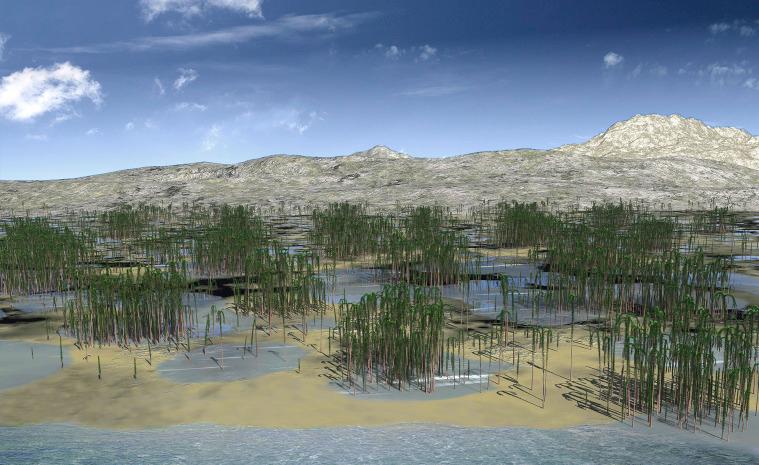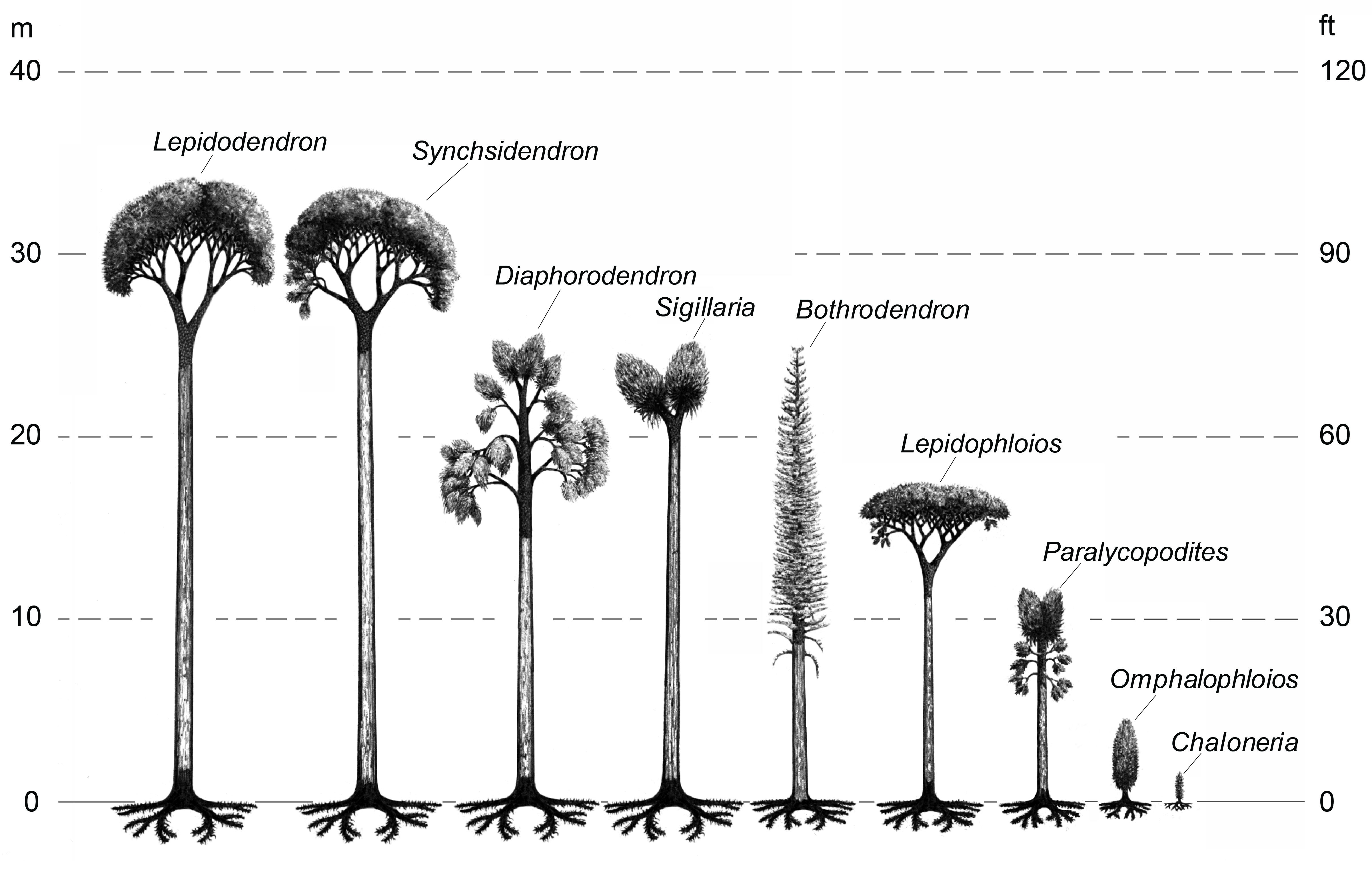These are amongst the first plants to colonise the land when it was little more than rocks and eroding clays. The illustration illustrates this type of environment with colonies of these vascular small trees that grew in wet clay soils, not unlike the mangroves of today. Interestingly relatives of these plants still exist in marshy ground of streams and swamps. but these are very small by comparison, often less than 10 cm in height compared to the 10 foot trees of these early forests. Reproduction was by spores more like ferns than trees of today that produce flowers or cones with seed.

>>Paleontologists are generally thrilled to find pieces of an ancient tree or a few well-preserved fossil leaves, but researchers in China recently hit the mother lode, uncovering an entire fossilized forest covering about 2.7 million square feet. The trees are the oldest found in Asia, providing insights into how the root systems of modern forests developed.
Hannah Osborne at Newsweek reports that the forest was discovered in 2016 in the Jianchuan and Yongchuan clay mines near the village of Xinhang, in the east central part of the country. The ancient trees are visible in the walls of the quarry, including the trunks and structures resembling pinecones.<<
https://www.smithsonianmag.com/smart-news/fossil-trees-reveal-oldest-known-forest-asia-180972877/
